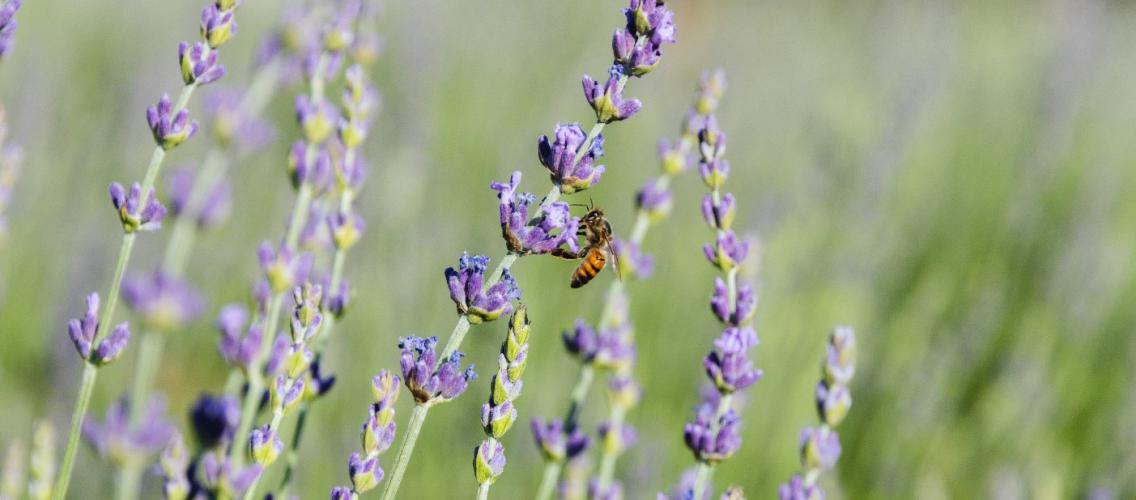
Garden and Country Extension Webinar Series
University of Arizona Gila County Cooperative Extension
A weekly Zoom webinar (60-minutes or less) featuring a variety of horticultural and natural resource topics relevant to the environmental conditions and residential concerns of Gila County, Arizona.
Contact: Chris Jones, Extension Agent Agriculture and Natural Resources
Upcoming 2021 Webinars
Past webinars are posted at the UA Cooperative Extension YouTube Channel.
See the Payson Community Garden Spring Gardening webinars here.
Rainlog: Cooperative rainfall monitoring network
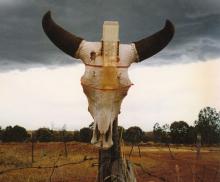
August 12, 2021 Rainlog.org is a cooperative rainfall monitoring network for Arizona. Data collected through this network will be used for a variety of applications, from watershed management activities to drought planning at local, county, and state levels.
Vertebrate Pests in the Garden
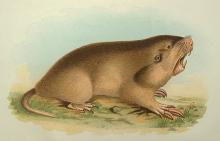
August 5, 2021 Good judgment and careful planning are required to help solve vertebrate pest challenges in Arizona. Many vertebrate animals causing problems in gardens and landscapes are protected by law. This webinar will provide basic information about how to manage vertebrate pest damage and when it is appropriate to apply control strategies.
Project Harvest: Summary and Major Findings Concerning Harvested Rainwater Quality
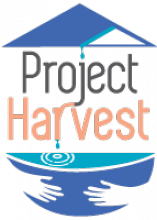
July 29, 2021 By incorporating a co-created citizen science model, Dr Ramirez-Andreotta and her team of researchers and promotoras (community health workers) conducted a three-year research project to learn about and practice rainwater harvesting to irrigate home and community gardens in Arizona, called Project Harvest. Learn about the summary and major findings of this important research project!
When the Smoke Clears—The Road to Recovery Following Large-Scale Wildfire
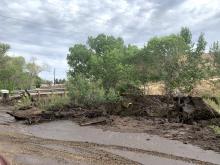
July 8, 2021 Carol Ekarius, CEO of Coalitions & Collaboratives (COCO), presented with us last year after the Bush Fire. Aware of the devasting Telegraph, Mescal and Backbone Fires, she will be back to discuss some of the first-steps toward recovery, such as anticipating flood conditions and debris flows, working collaboratively on response by forming a recovery committee, figuring out how to pay for it, and thinking about long-term recovery.
Post Wildfire Mitigation: Gila County 2021
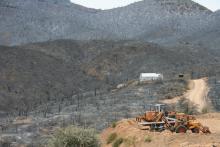
July 1, 2021 The objective of post-fire mitigation is to minimize secondary impacts to structures and infrastructure resulting from post-fire conditions. Reduction in vegetative cover and changes to soil structure increases the risk of sediment, debris, and flooding that can further impact communities that are dealing with post-fire cleanup and response.
Challenges and Opportunities for Managing Invasive Plants in Arizona
June 24, 2021 Nonnative invasive plants have been described as a ‘biological wildfire’ that is out of control and spreading rapidly. The Arizona Department of Forestry and Fire Management has an Invasive Plant Program that includes a grant opportunity and web map for invasive plant treatment prioritization. This presentation will focus on challenges and opportunities for managing invasive plants in Arizona.
Large-scale Water Harvesting for Small-acreage and Households
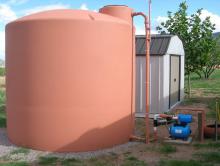
June 17, 2021 Rainwater is considered high-quality water that can be treated to drinking water standards by rain harvesters themselves on their homesteads. Mary Ann will discuss the option of large-scale rain harvesting to supply water for their domestic needs. Presentation will include the steps, components, and principles necessary for the safe treatment of collected rainwater to help with those in rural areas where rain is the preferred or the most expedient water supply.
Nalwoodi Denzhone Community Webinar: We Grow, We Harvest, We Share
June 3, 2021 In the heart of the Eastern Arizona food desert lies San Carlos, home for the San Carlos Apache people. There, on an 80-acre former tree farm, Nalwoodi Denzhone Community (NDC) seeks to reawaken strength and beauty in at-risk, Apache youth and restore the harmony (Shil Gozhoo) that comes from Apaches being reconnected to their Creator, their land, and their natural heritage.
Be Ember Aware! Protect your home from wildfire
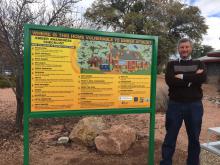
May 24, 2021 During a wildfire, thousands of embers can rain down on your roof and pelt the side of your home like hail during a storm. If these embers become lodged in something easily ignited on or near your house, the home will be in jeopardy of burning. By being ember aware and taking action ahead of time, a homeowner can substantially reduce the ember threat. Your home CAN survive when the embers arrive. Slides by and courtesy of University of Nevada Cooperative Extension, Ed Smith and Sonya Sistare.
Waggin' Vineyard & Estate, LLC: A vineyard and Agritourism in Globe, AZ
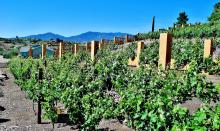
May 14, 2021 Tim Trent will discuss his dream of establishing a vineyard in Globe, AZ. He will share a little about his experience growing wine grapes locally, and about the experience and products at the Waggin' Vineyard and Estate
Stinknet: a Weed Advancing in Arizona
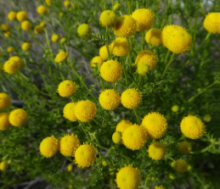
Panel Presentation: NREEF 2021 Campaign Launch
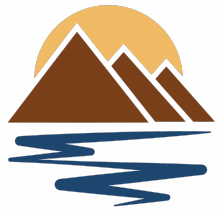
April 30, 2021 The Natural Resource Extension Education Foundation (NREEF) is a 501(c)3charitable foundation, founded in 2019. NREEF supports natural resources educational events, initiatives, and efforts conducted by the Association of Natural Resources Extension Professionals and other Cooperative Extension organizations. Why? Because natural resources Extension professionals are in the forefront, helping communities address working lands conservation, climate change, invasive species, sustainability, water quality and many other issues. There’s a fundamental need to support these professionals, helping them to develop advanced skills and supporting local programs, ones difficult to fund through traditional means. Join us to ensure a strong bright future for natural resources Extension education and to support your values regarding conservation and environmental resources management.
Assessing the Feasibility of a Climate Master Outreach Program
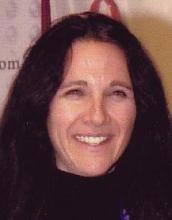
April 29, 2021 The purpose of this USDA AFRI-NIFA funded “Managing for Climate Change: Climate Master Outreach and Extension, Focus Group Study” is to increase climate change literacy and to determine best practices and methods in supporting both climate adaptation and mitigation activities for diverse groups and communities.
Transforming Needs into Assets: Establishing a Watershed Partnership to Address Environmental and Economic Challenges
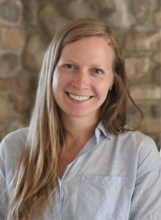
April 22, 2021 Since 2017, the University of Arizona Cooperative Extension and Water Resources Research Center (WRRC) have collaborated with community partners to establish a watershed partnership in the Globe-Miami area, also known as Cobre Valley, in central Arizona. Through a stakeholder-driven needs assessment of the region, the creation of a watershed partnership was identified as a constructive step toward uniting environmental stewardship, community health, and economic benefits under a single umbrella. The WRRC and Gila County Cooperative Extension will assist the CVWP in creating the structure for the new watershed partnership with the goal of enabling a network of local community members to implement their vision for environmental stewardship while increasing the livability and economic opportunities in the region. This presentation will highlight key ingredients for success to generate interest, achieve consensus, and engage diverse stakeholder groups in the establishment of a watershed partnership.
Payson Community Garden Classes
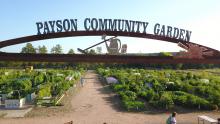
Spring Gardening Classes: February 11 - April 15, 2021
Extension Agent Chris Jones teamed up with the Payson Community Garden in Northern Gila County to feature their 2021 spring gardening classes on the UA Country and Garden Extension webinar series. Speakers included Payson Community Gardeners, sharing their experiences gardener-to-gardener. You are invited to view the recordings here to learn the Payson Community Gardeners' success and how to adapt their know-how to your garden. Classes included the benefits of soil building, ways to have healthy plants throughout the garden season, how to keep bugs and disease away, and harvesting at the right time. The Q&As at the end of each webinar provide a valuable resources as the presenters answered participant questions.
Recorded webinars are posted at the UA Cooperative Extension YouTube Channel and at the Payson Community Garden website.
Starting Vegetable Seedlings
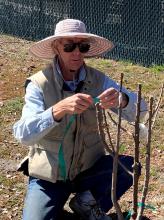
February 4, 2021 Learn how Rich starts and germinates his own vegetable seedlings indoors for his summer garden. He’ll start with the basics of selecting seed types that are appropriate for the season and then show his step by step process for growing healthy “starts” to plant in the garden in May in Payson, AZ. Included will be choosing a potting soil, soil prep, filling seedling trays, planting, growing under grow lights, transplanting into pots and finally planting into the garden.
How to Prune a Shade Tree
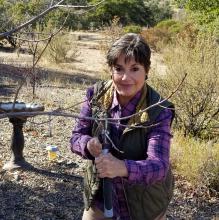
February 2, 2021 Winter is the perfect time to prune a tree in Arizona: The tree is dormant so sap flow is minimal and the tree can safely respond to pruning cuts before bud break in the spring. Jan Groth will demonstrate best practices for pruning a young ornamental shade tree. She will discuss how to: make a proper pruning cut; select which branches to cut; remove larger branches; which tools to use, safety concerns and more. This webinar is perfect for first timers, new residents and anyone who wants to be confident they are planting the right way. Be sure to stick around for the Q&A!
The Space Mission Earth Program
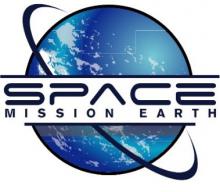
January 28, 2021 We all live in a planetary civilization. Everyone contributes to the Planet Earth Civilization. We are all the builders through our thoughts and actions. The construct of a planet civilization elevates us all to a common ground. A program is introduced with the intent to establish Planet Earth Equitable Social – Environmental Stewardship. The program structure is based upon For Benefit, Open Access to Knowledge and Open Source platforms. The program and book titled Space Mission Earth for all intents and purposes are structured as an operational space program. Their mission is to develop the planet’s civilization as if it were a new planet through equitable social and environmental stewardship implementation actions. Principles and tools are presented to work within a common ground for the balance of the Environment, Nature and Humanity within the planet. The project and the synthesis concept are presented for further development as proof of concept through planet wide input.
Rabies Outlook in Arizona 2021

January 14, 2021 Are you curious about rabies? Need to review the rabies laws in Arizona? Wondering who is at risk? This talk will answer commonly-asked questions and dispel rabies myths.
Questions Addressed in Webinar • What is rabies? • How serious is rabies? Can rabies be treated? • How do animals get rabies? How do people get rabies? • When should you worry? • Who should be vaccinated? • How common is rabies in Arizona? Join us for a lively discussion!
Opportunities and Barriers for Arizona to Supply Wood Fiber to South Korean Renewable Energy Markets
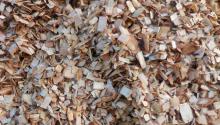
December 17, 2020 Restoration treatment projects in northern Arizona can reduce wildfire risk and restore forest health. But markets for biomass wood fiber from restoration activities in Arizona are highly limited, and finding utilization outlets for the by-products of forest restoration activities are increasingly important. With economically efficient transportation options and strong stable partners, Arizona could supply wood fiber to Asian markets in an economically efficient and sustainable manner. This study evaluated business potential for exporting wood fiber from Arizona to renewable energy markets in South Korea by performing a strengths, weaknesses, opportunities, and threats (SWOT) analysis.
Winterizing to Keep Your Garden Alive
December 10, 2020 Suzan Miller-Hoover from the Payson Community Garden in Arizona discusses how to winterize the garden. Keep your garden alive during the winter. Feeding your gardens’ microbes and worms over the winter will enhance your chances of having an even better harvest next summer. Let’s discuss the essential steps to winterizing your garden, preparing it for the growing season ahead.
Creating Pollinator Habitats and Conservation Partnerships
December 3, 2020 Pollinators such as bees, butterflies, moths, hummingbirds, bats and numerous other insect species are vital to the functioning of natural and agricultural ecosystems. It is estimated that managed and wild pollinators help pollinate over 75% of both our flowering plants and cultivated crops. Freeport-McMoRan Incorporated (FMI) maintains a commitment to conserving these critical pollinators through the company’s corporate Pollinator Conservation Initiative. The goal of this initiative is to increase habitat for pollinators, while providing learners of all ages with opportunities to engage in STEM education. FMI Senior Biodiversity Scientist, Ann George discusses the elements required to create a successful pollinator habitat. She will also explore several case studies of how Freeport has leveraged its conservation efforts with partners to promote pollinator-focused education and outreach activities, such as Earth Day celebrations, pollinator workshops and hands-on planting events in the field.
Yellow Bluestem: An Encroaching Invasive Grass
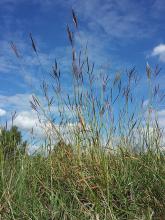
November 19, 2020 Ashley Hall, Rangeland and Animal Science Area Assistant Extension Agent at University of Arizona Cooperative Extension discusses Yellow Bluestem (Bothriochloa ischaemum), a non-native invasive species that negatively affects rangeland habitat in both economic and ecological ways. Yellow Bluestem is a perennial grass introduced to the United States from Europe and Asia in the early 1900s as a way to control erosion and as a forage species. In the past several years, this species has become an emerging invasive in Arizona.
Woodbury Fire Ecology Report
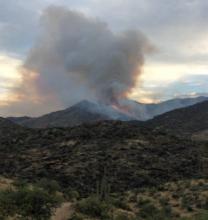
November 5, 2020 Dr. Mary Lata, Fire Ecologist, USDA Forest Service, Tonto National Forest, discusses her fire ecology report and the impacts and implications the Woodbury Fire has for local land management. The Woodbury Fire (~129,000 acres) was the 5th largest fire in Arizona history as of 2019. The absence of fire in its fire adapted ecosystems allowed live and dead woody fuel to increase and the fuels to become more contiguous.
Wildfire Mitigation, Preparedness, Response, and Recovery: An Emergency Management Perspective
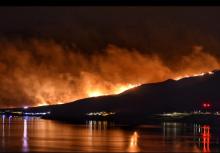
October 29, 2020 Carl Melford, Gila County Emergency Manager, discusses the role of Emergency Management. Throughout the past 5 years, Gila County has been faced with record breaking wildfire activity. Learn how Gila County Emergency Management works with their Public Safety partners to overcome the challenges that come with Wildfire season. Acquire skills about planning tools such as the Gila County Community Wildfire Protection Plans (CWPP) and how you can help to protect your home and community from the ever evolving threat of wildfire, and the post-fire flooding events that follow.
Innovation at the Gila County Landfill: Compost Pilot Project
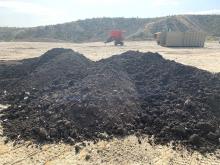
October 22, 2020 Kenny Keith, Gila County Landfill and Recycling Manager, discusses a composting pilot project that seeks to fulfill two main goals: to extend the life of the Gila County Landfill at Russell Gulch, in Globe, AZ; and to create an environmentally safe and useful compost. Waste paper, cardboard, tree branches, limbs and brush are mixed with processed sludge from community wastewater to make the compost. The finished compost is tested for coliforms, metals and hazardous waste to assure it is safe and considered Class A quality. Project partners include the Arizona Department of Transportation, Town of Miami and the Gila County Board of Supervisors, as led by District 2 Supervisor Tim R. Humphrey.
Cobre Valley Watershed Partnership Watershed Action Plan
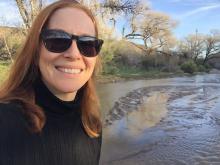
October 15, 2020 Victoria Hermosilla, Cobre Valley Watershed Partnership Coordinator discusses the watershed action plan for Cobre Vally in Arizona: The communities of the Cobre Valley (Globe-Miami, AZ and nearby incorporated areas), share many of the same challenges surrounding water resources: reliable sources of potable water, groundwater contamination, aging water infrastructure, a push for environmental considerations, and trying to not be overlooked in the Arizona General Adjudication. This presentation is to not only share the partnership’s progress, but engage the community with ideas and vision.
How to Plant a Tree
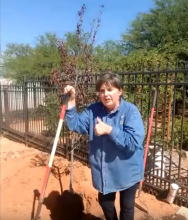
October 8, 2020 Fall is the perfect time to plant a tree Arizona: There is time for the roots to get established before winter sets and then the tree can acclimatize over the winter and be ready to grow and spread its roots in spring. Jan Groth will demonstrate best management practices for planting a containerized tree. She will discuss what to look for when buying a containerized plant, how to prepare the hole for planting, how to handle the plant when taking it out of the container and putting it into the ground, and direction for mulch and fertilizer. This webinar is perfect for first timers, new residents and anyone who wants to be confident they are planting the right way.
Bark Beetles in Arizona: Signs, Symptoms, and Identification of Native and Non-native Bark Beetles
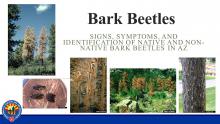
October 1, 2020 Arizona' Forest Health Specialist Aly McAlexander presents a general overview of the bark beetles found in Arizona. We discuss both native and nonnative bark beetles found in Arizona; as well as go over the signs and symptoms associated with these beetles. By the end of the presentation, attendees will be able to more accurately identify bark beetle infestations and determine which beetle is the culprit. We will also review management options and discuss the new Healthy Forests Cost Share Program the Department of Forestry and Fire Management is offering to private landowners.
Payson’s New Fire Adapted Community Town Code
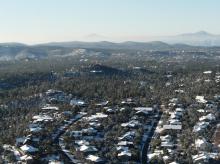
September 17, 2020 The newly adopted Fire Adapted Community Town Code addresses the vegetation on all properties within town limits, including land owned by the town. The adoption of the town code shows how serious Payson takes the dangers of wildfire and how the Town Council and Mayor are committed to address this threat to the Town’s safety. Payson's Fuel Manager Kevin McCully discusses what the code entails and how residents can participate.
How to Grow a Winter Vegetable Garden
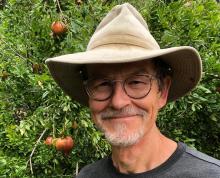
Septic Tank Health: Take care of your septic tank!
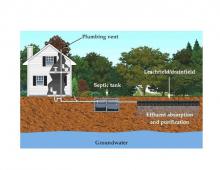
Greenstripping and Grazing for Cheatgrass
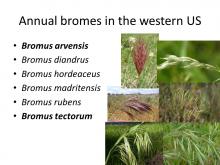
- Watch Recording
- Combining active restoration and targeted grazing to establish native plants and reduce fuel loads in invaded ecosystems.
Lavender Agritourism in Arizona: Bringing New Life To A Pioneer Farm
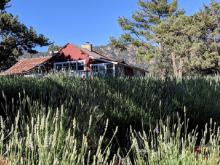
Restoration approaches to manage buffelgrass and other invasives
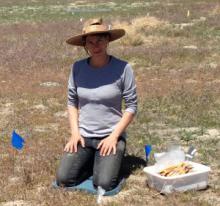
Container Gardening Too!

When the Smoke Clears—The Road to Recovery Following Large-Scale Wildfire

Container Gardening
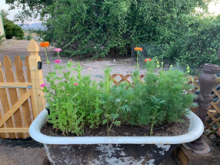
July 23, 2020 Container gardening enables you to grow plants where they otherwise wouldn’t. Containers can sit on stairs, hang, be moved as the season progresses, come indoors for the winter or can be handicap accessible. The only limit is your ingenuity and imagination. Bill will discuss container requirements, along with the pro’s and con’s of the many container materials. He will describe potting soil characteristics, such as container material, size, location and intended purpose. This presentation also includes: 1) Different options to mix your own soil and how to produce a better soil at a better cost; 2) Watering: How much, how often and how to manage water quality issues, such as hard water; and 3) Fertilizers and long term soil maintenance.
The Good, the Bad and the Ugly: Bugs in the Garden
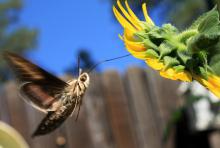
July 16, 2020 This is a presentation to help gardeners recognize beneficial and non-beneficial insects and bugs in the garden. Suzan Miller-Hoover will discuss organic ways to deter and eliminate the bad bugs and to encourage beneficial ones. Lots of pictures of bugs! Suzan has been gardening for many years in her backyard. She joined the Payson Community Garden three years ago and learned how much she didn't know. As a staff member of the garden, she is happy to share what she has learned. Photo credit: Anita Barker
How to make and use compost tea webinar
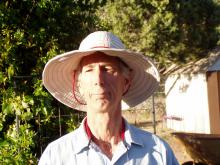
July 09, 2020 Compost tea is one of those often misused, misunderstood terms that gardeners throw around from time to time. The old method of making it has limited benefits and may end up harming your plants more than helping. So it’s time to learn what ACTIVELY AERATED COMPOST TEA is all about. In my presentation you will learn about what equipment to use, how to make it yourself for very little money, how to “brew” compost tea, what to do with it once you have it and what it does for your plants. Do your plants a favor and give them a shot of the beneficial microbes that deliver first class plants in your garden.
Solar Energy: Off-grid uses and rooftop options
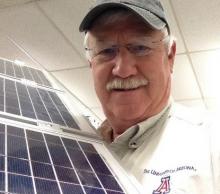
June 25, 2020 Solar energy systems can help Arizona individuals, families, and businesses achieve energy conservation goals beyond the adoption of energy-efficient appliances and LED bulbs. This presentation describes solar photovoltaic (PV) system components and their use in different types of solar PV systems. The benefits and limitations of each system will be discussed, as well as steps to determine how to size a stand-alone solar PV system.
Biochar Kilns
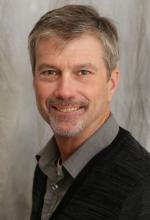
June 18, 2020 Hazardous fuels are a major problem on wildlands throughout the West. Foresters traditionally pile and burn material from fuels reduction projects, but air quality restrictions and longer fire seasons have made open pile burning much more difficult over the past 30 years. Biochar kilns are an innovative approach to hazardous fuel reduction. Containing fuel inside a metal box can allow burning under restricted smoke dispersal conditions. It also allows burning in relatively close proximity to heavy fuels, structures, and within Stream Management Zones. Burning in containers minimizes soil damage, and soil conditions can improve by using the biochar produced on-site. This is an accessible and durable approach to carbon sequestration.
Biochar Introduction and Uses
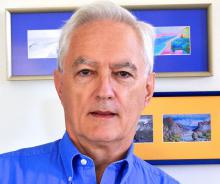
June 11, 2020 Biochar is the same as charcoal, made from the incomplete combustion of wood or other biomass products. Biochar made from green waste can be good for the climate and environment. Since burning wood does not add fossil carbon to the atmosphere, making and using biochar is considered a carbon-negative process. Adding biochar to soil can store carbon for many generations and help lower CO2 gas emissions. Biochar can initially add salts and raise pH in semi-arid soils and is not ideally suited to most Southwest soils. Nonetheless, adding biochar to semi-desert soils can make plants more drought resistant, reduce plant nutrient losses, and when mixed with compost can improve soil structure.
Biology of Red Brome Grass

June 4, 2020 This year is predicted to be another potentially active fire season in certain parts of the state, such as Gila County, with conditions very similar to what Arizona saw last year. Two wet winters produced dense stands of red brome (Bromus madritensis spp. rubens) in some areas. This exotic annual grass helped fuel the Woodbury fire in June 2019 in Tonto Basin. It became widespread in the Cobre Valley area too this year. Join plant ecologist Cindy Salo to learn more about this invasive grass: where it is from, how it got to Arizona, how it behaves in the Sonoran Desert, and how we might best live with it.
Ready, Set, Go! - Fire Preparedness
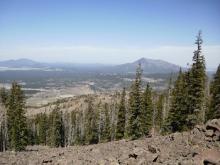
May 28, 2020
The Ready, Set, Go! Program provides information for residents and property owners on how they can successfully be prepared in the event of a wildland fire. Kevin McCully will discuss our area’s threat for wildland fire and describe more about the wildland urban interface (WUI), an area which is not only limited to forest vegetation. Fire season is an increasing threat and a year-round reality. As a seasonal resident or property owner, it is important to educate yourself and prepare. The Ready, Set, Go! Program gives you simple, easy-to-follow tips to increase your safety and that of your family.
Making Compost - The Traditional Method
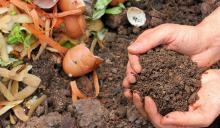
May 21, 2020 A healthy, living soil is essential for sustainable agriculture. Making compost at home is an important step toward that goal. The raw materials for compost are locally available, and the finished product is better than chemical fertilizers which contain little or none of the nutrients (beyond nitrogen, phosphorus and potassium) that plants require. Composting basics are easily mastered by any backyard gardener.
Start Your Winter Garden Webinar
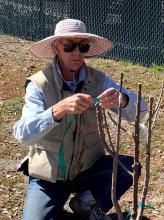
August 26, 2021 Learn how Rich Johnson gets an early start for a productive winter garden. Richard Johnson is an organic gardener in Arizona with over 20 years of experience. Rich moved to Tucson in 1988 and learned desert gardening and composting from the Tucson Organic Gardeners club that is now in its 49th year. He moved to Payson in 2018 where he provides volunteer leadership to the local gardening community and as a Gila County Master Gardener.
Drought & Extreme Heat: Plant responses and landscape maintenance practices webinar
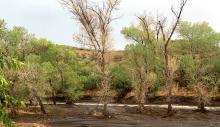
September 2, 2021 Drought and heat conditions are becoming more common in the southwestern United States. Although many plants are adapted to dry conditions, prolonged drought and varying degrees of severity may cause irreversible damage or mortality to plants, including our native vegetation. This presentation covers how plants respond to heat and drought and how to irrigate trees and other large woody plants during extreme conditions to keep them healthy.
Seed Saving Webinar
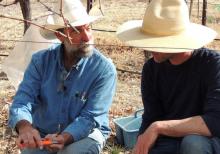
September 9, 2021 Bill Cook discusses seed saving in this timely webinar. He explains "Reason being, by then you know which plants are the rock stars and there's enough growing season remaining to get genuinely mature fruit for seed." Learn basic seed saving techniques, including on-the-plant and the wet method, and which species are easiest for beginners.
Tree Planting: Arborists’ Best Management Practices Webinar
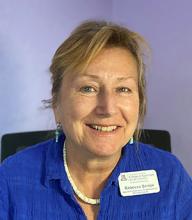
September 23, 2021 Fall is tree planting season, it’s time to get ready by reviewing the best practices of tree planting. The International Society of Arboriculture has produced Best Management Practice (BMP)Booklets on numerous topics to guide arborists. This talk will follow the BMP on tree planting adding adjustments and tips for our state and plant material. Picking the right tree and planting it well helps ensure the biggest investment in the landscape will grow into the beautiful and long-lived center of the landscape we desire. Join ISA Certified Arborist Rebecca Senior as we dig deep into the best practices and learn the answer to the question -- Where is the top of the rootball?
Pollinator Plants to Plant Now, and the Advantages of Fall Planting Webinar
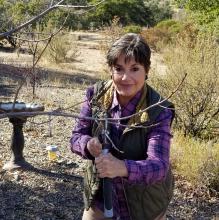
September 30, 2021 Fall is the perfect time to plant a tree or shrub in Arizona: But what to plant? Jan will introduce us to several plants that are important to Arizona pollinators, and why fall planting will help your plant to live a long and successful life. This webinar is perfect for first timers, new residents and anyone who is interested in helping Arizona's pollinators to thrive.
Insects, Weather & Climate Webinar
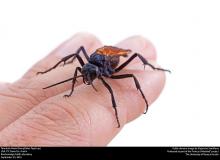
October 28, 2021 Dawn Gouge, Extension Specialist, Urban Entomology, UA Maricopa Agricultural Center discusses how the 2021 weather patterns influenced insect populations in Arizona. She will also describe how long-term changes in climate is altering the distribution of species, and how this is likely to affect humans living in the desert southwest.
Mitigating Postfire Runoff and Erosion in the Southwest using Hillslope and Channel Treatments Webinar

November 4, 2021 Henry Grover, USDA Forest Service Soil Scientist, discuss highlights from the NAU ERI Working Paper #44 as the webinar is titled. Wildfires in the southwestern US are getting larger, more frequent, and more severe due to changing climatic conditions like rising temperatures and prolonged drought (Singleton et al. 2018, Mueller et al. 2020). Catastrophic wildfire events directly impact communities, ecosystems, and cultural resources—and can pose continuing hazards long after the fire is extinguished. Flooding and erosion from heavy rainstorms are postfire emergencies caused by the severe loss of vegetation cover and the alteration of soil conditions. Because these postfire impacts can pose safety concerns and threaten property and infrastructure, there is a need to understand postfire treatments and their effectiveness toward ecosystem resilience and community protection. The purpose of this working paper is to compare the effectiveness of treatments to mitigate the two most common forms of erosion, hillslope and channel erosion. With a focus on severely burned ponderosa pine (Pinus ponderosa) and mixed-conifer forest soils of the Southwest, this paper includes land management recommendations and treatment implications as well as examples of lessons learned and trade-offs among methods.
Native Plants for Arizona Mountain Landscaping Webinar
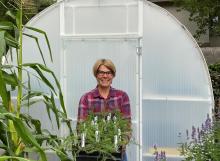
November 18, 2021 In this webinar, we will learn about some of the native plants that are available in the nursery trade and where these plants grow around northern AZ. Matching the microclimates in your garden with where native plants are found naturally in the environment will help you become a better native plant gardener by providing your plants with the best conditions to thrive. We will also discuss where you can find native plants for sale and learn about resources for obtaining seed for growing your own plants that are hard to find in the nursery trade.

